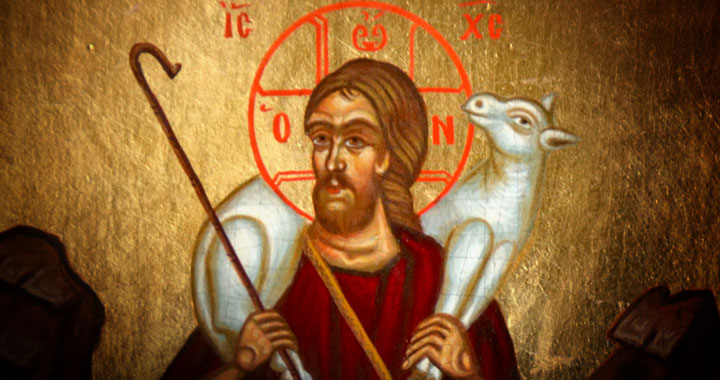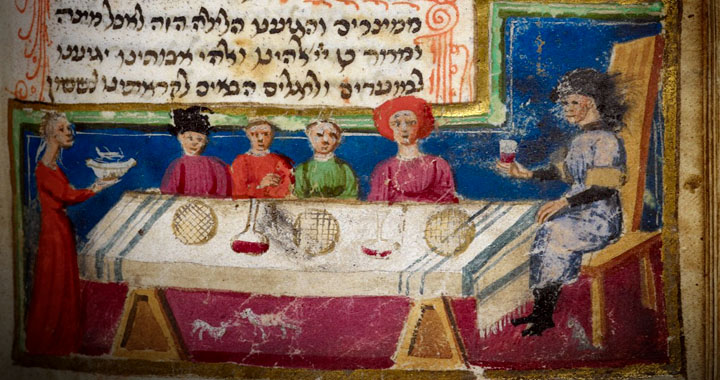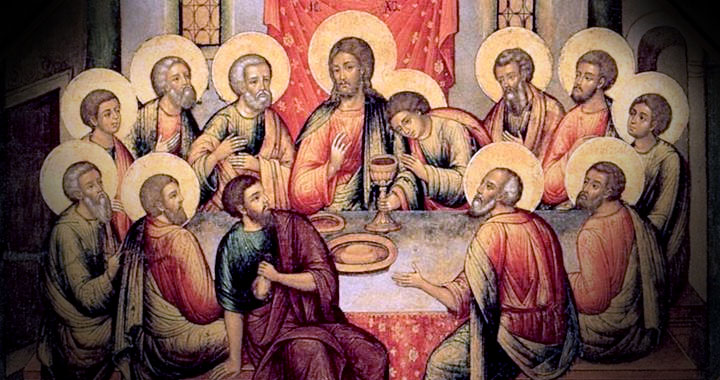In part 1 of our Eucharist study, we concluded with the premise that some sort of mechanism is required that would allow for our unification with Christ's sacrifice and thus gain a sharing in his everlasting reward. That mechanism is the holy Eucharist, but in order to understand why, we must first examine the Eucharist's roots in the history of Israel. In particular, since the Lord's Supper which instituted the Eucharistic celebration was a Passover meal, we must understand the significance of the Passover in the liturgy of the Old Covenant people.
Moses and the Passover (~1500 BC)
The first Passover: salvation from the Angel of Death
Exodus 12:1-13; “Now the Lord said to Moses and Aaron in the land of Egypt, ‘This month shall be the beginning of months for you; it is to be the first month of the year to you [Abib: around April]. Speak to all the congregation of Israel, saying: On the tenth of this month they are each one to take a lamb for themselves, according to their fathers’ households, a lamb for each household. Now if the household is too small for a lamb, then he and his neighbor nearest to his house are to take one according to the number of persons in them; according to what each man should eat, you are to divide the lamb. Your lamb shall be an unblemished male a year old; you may take it from the sheep or from the goats. You shall keep it until the fourteenth day of the same month, then the whole assembly of the congregation of Israel is to kill it at twilight.
Moreover, they shall take some of the blood and put it on the two doorposts and on the lintel of the houses in which they eat it. They shall eat the flesh that same night, roasted with fire, and they shall eat it with unleavened bread and bitter herbs. Do not eat any of it raw or boiled at all with water, but rather roasted with fire, both its head and its legs along with its entrails. And you shall not leave any of it over until morning, but whatever is left of it until morning, you shall burn with fire. Now you shall eat it in this manner: with your loins girded, your sandals on your feet, and your staff in your hand; and you shall eat it in haste—it is the Lord’s Passover. For I will go through the land of Egypt on that night, and will strike down all the firstborn in the land of Egypt, both man and beast; and against all the gods of Egypt I will execute judgments—I am the Lord. The blood shall be a sign for you on the houses where you live; and when I see the blood I will pass over you, and no plague will befall you to destroy you when I strike the land of Egypt.”
Passover celebration will be an ongoing, permanent Memorial [Hb. Zikkaron] for Israel:
Exodus 12:14-16; “Now this day will be a memorial to you, and you shall celebrate it as a
feast to the Lord; throughout your generations you are to celebrate it as a permanent
ordinance. Seven days you shall eat unleavened bread, but on the first day you shall
remove leaven from your houses; for whoever eats anything leavened from the first day
until the seventh day, that person shall be cut off from Israel. On the first day you shall
have a holy assembly, and another holy assembly on the seventh day; no work at all shall
be done on them, except what must be eaten by every person...”
The Jewish concept of Zikkaron: The memorial celebration unites its participants with
the actual event it recalls. Through the ongoing memorial celebration, the Passover in
Exodus is not an event reminisced; Passover is an event truly re-presented, experienced,
and applied to the memorial participants. In a memorial, we do not invoke our memory
of an event, we invoke God’s memory of the event. And because God’s memory is
eternal (unbound by time), the past event being celebrated is brought into the present
by God for the memorial celebrants to be true participants.
The Mishnah (a sort of Jewish gloss or “catechism” from ~AD 200 that served as a compilation of
Judaism’s ancient traditions) affirms the idea that God brings the past into the present through
Memorial celebrations:
Mishnah Pesachim 10.5; “In every generation a man must so regard himself as if he
himself came out of Egypt, for it is written, 'And thou shalt tell thy son in that day saying,
it is because of that which the Lord did for me when I came forth out of Egypt.’”
After the Exodus, while wandering in the desert, God reiterates his commandment to the Israelites
to continually celebrate Passover:
Numbers 9:1-13; “Thus the Lord spoke to Moses in the wilderness of Sinai, in the first
month of the second year after they had come out of the land of Egypt, saying, ‘Now, let
the sons of Israel observe the Passover at its appointed time. On the fourteenth day of
this month, at twilight, you shall observe it at its appointed time; you shall observe it
according to all its statutes and according to all its ordinances.’ So Moses told the sons of
Israel to observe the Passover. They observed the Passover in the first month, on the
fourteenth day of the month, at twilight, in the wilderness of Sinai; according to all that
the Lord had commanded Moses, so the sons of Israel did... Then the Lord spoke to Moses,
saying... ‘the man who is clean and is not on a journey, and yet neglects to observe the
Passover, that person shall then be cut off from his people, for he did not present the
offering of the Lord at its appointed time. That man will bear his sin.’”
5
Leviticus 23:5; “In the first month, on the fourteenth day of the month at twilight is the
Lord’s Passover.”
Deuteronomy 16:1-7; “Observe the month of Abib2 and celebrate the Passover to the
Lord your God, for in the month of Abib the Lord your God brought you out of Egypt by
night. You shall sacrifice the Passover to the Lord your God from the flock and the herd,
in the place where the Lord chooses to establish His name. You shall not eat leavened
bread with it... You shall cook and eat it in the place which the Lord your God chooses.”


